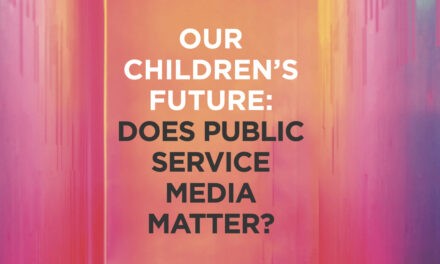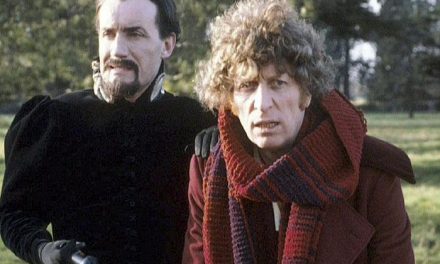In November 2017, Variety magazine published an open letter in which 18 women from the cast and crew of US teen drama series, One Tree Hill (The WB/CW, 2003 – 2012) accused the programme’s showrunner, Mark Schwahn, of sexual harassment. Ultimately, 41 women who had worked with Schwahn came forwards to detail their own experiences of sexual harassment and he was subsequently fired from his current show, The Royals (E!, 2015 – 2018). In previous research, I examined representations of sexual violence on-screen in One Tree Hill (referred to as OTH throughout this blog), as part of a larger project on how sexual violence storylines function narratively and ideologically across the wider teen drama series genre. My recent research has been drawing on feminist creative labour scholarship to examine gender inequalities in the television industry. This blog aims to think about the connections between these two areas of interest – sexual violence on-screen and gender inequalities off-screen – using OTH as a case study to think about possible connections between the two, but also some of the inherent difficulties involved in making these connections.
There are two prominent sexual violence storylines in the first four seasons of OTH – both involving attempted rape with central female character, Peyton (Hilarie Burton) as the victim and marginal male characters as the perpetrators each time. (Notably, Burton has been central in speaking out against Schwahn, as well as against Ben Affleck, who sexually assaulted her on-screen while she worked as an MTV presenter). One storyline is episodic and one is overarching, meaning there are inevitable differences in how each narrative plays out and the time that is devoted to them, but there are striking patterns between them too.
In both cases, the idea of a ‘sexual violence’ narrative is something of a misnomer. Sexual violence in both storylines is heavily embedded within heteronormative romantic relationships, and is used primarily as a stepping stone to advance romance rather than being addressed as a form of gendered abuse. In the episodic storyline, Peyton is drugged and almost raped at a college party by a non-recurring male (Season 1, Episode 8 ‘The Search for Something More’). The sexual violence narrative is ‘resolved’ when the male protagonist, Lucas (Chad Michael Murray), punches the perpetrator. Lucas’ heroism then prompts a romantic relationship between Lucas and Peyton’s best friend, who watches on admiringly. The attempted rape takes place in the first third of the episode and it is largely the romantic narrative that dominates the rest. In the overarching storyline, which takes place in season 4, Peyton is stalked and later physically and sexually attacked by another marginal male character. Throughout this storyline, Lucas helps protect her and this prompts a romantic relationship between Lucas and Peyton this time in a familiar ‘damsel in distress’ type scenario.
In both cases – and as is typical of the wider genre – sexual violence is framed as a personal issue, rather than a broader social or political problem. Only tenuous solutions are offered, with male perpetrators presented as shadowy figures who typically disappear after the attacks and are largely not held accountable for their actions. Further, in both storylines the emphasis on heteronormative romance operates to restore rather than complicate hegemonic gendered ideals. Indeed, as Sujata Moorti notes, albeit in a different context, ‘rape becomes an occasion for the critique of “bad” masculinity and the reproduction of hegemonic masculinity’ (Moorti, 2002: 133) as central male characters protect and defend victims. Violence in the service of protecting the female victim is tolerated, even glamorized as an expression of normative masculinity, separating this behaviour from violence committed by the one-dimensional perpetrator. This individualised understanding renders broader gendered sexual inequalities underlying these attacks invisible. It’s notable that within the series itself, even though Peyton is the victim of attempted rapes both times, no connections are drawn between the storylines.
I don’t want to suggest that there is a straightforward relationship between representations of sexual violence in OTH and Schwahn’s role as a showrunner. Schwahn did not write or direct the aforementioned narratives, raising the question of how do we think about on/off screen relationships when thinking about sexual violence? Academic scholarship around connections between on/off screen representation in relation to sexual violence has typically engaged with ideas of the artist genius and the potential tensions involved in separating out the artist from the work. As such, there has been a tendency in both academic and popular discourses to focus on auteurs with high degrees of authorial control, such as Allen, Polanski, Hitchcock. The auteur has a more prominent history in film studies, but in the #metoo era, there has also been increasing attention paid to male TV auteurs – typically performer/creators – such as Bill Cosby and Louis C.K. It’s difficult to approach OTH in the same way as, like the teen genre and wider medium of television, it has a more fraught relationship with ideas of ‘quality’ and ‘art’. Instead, teen television is typically associated with triviality, femininity and ‘soapiness’. Further, OTH is a collaborative endeavour rather than being heavily authored by Schwahn.
And yet, in looking at the open letter written by the women of OTH, we can start to see striking parallels that speak to a similar culture in which the representations on-screen and the sexual harassment off-screen were taking place. Off screen, the perpetrator (Schwahn) was similarly not held accountable for his sexually abusive behaviour, with women forced to handle his harassment as a ‘personal’ problem rather than something that was recognised as systematic, structural and pervasive. In the open letter, the women speak of experiencing emotional, psychological and physical sexual harassment from Schwahn in relative silence, with long-lasting effects on their mental well-being. (Although I want to point out here that the letter makes it clear these women did often speak out, but were simply dismissed or not listened to). Their account of this harassment resonates with Rosalind Gill’s (2014) notion of gender inequalities in the creative industries as ‘unspeakable’ in a postfeminist and neoliberal climate. In the letter, the women note, “Many of us were told, during filming, that coming forward to talk about this culture would result in our show being cancelled and hundreds of lovely, qualified, hard-working, and talented people losing their jobs.” In a competitive industry, these women were expected to feel grateful for having well-paid, steady work. Sexual violence here is individualised, and the onus is put on women to save their colleagues’ jobs, rather than on Schwahn to stop harassing them.
The content of their letter also speaks to Judith K. Pringle and Deborah Jones’ (2015) idea of ‘unmanageable’ gender inequalities in contemporary film and TV industries as there is nobody to hold Schwahn to account. While Schwahn’s behaviour is described as an ‘open secret’, nobody stepped in to challenge him during filming: “Many of us were put in uncomfortable positions and had to swiftly learn to fight back, sometimes physically, because it was made clear to us that the supervisors in the room were not the protectors they were supposed to be.” Instead, the women speak of having to deal with his harassment on more personal levels, such as creating safe spaces to talk about his behaviour, confiding and believing in one another and warning other women joining the crew. Like the representations of sexual violence on-screen in OTH, off-screen the female survivors of Schwahn’s behaviour were similarly marginalised. Despite it being an ‘open secret’, the perpetrator was not held to account by the studios throughout the series’ 8 seasons.
The letter attempts to redress the lack of action taken against Schwahn through a feminist emphasis on gendered solidarity. ‘We are all deeply grateful for Audrey’s courage. For one another. And for every male cast mate and crew member who has reached out to our group of women to offer their support these last few days. They echo the greater rallying cry that must lead us to change: Believe Women. We are all in this together.’ The letter supports an understanding of sexual violence not as a one-off aberration, but as pervasive, and in follow up interviews, the women of OTH often speak of a notion of ‘sisterhood’.
As Shelley Cobb and Tanya Horeck assert, in their introduction to a Feminist Media Studies Commentary and Criticism on the Post-Weinstein era, ‘Second-wave feminist calls to recognize rape and sexual harassment as endemic social problems are being publicly acknowledged in this twenty-first-century cultural moment in ways previously unimaginable.’ (2018: 489). They go on to argue that, ‘this moment of “mass disclosure,” in which the media spotlight is trained on sexual harassment and abuse in the workplace, demands careful feminist analysis and response.’ (2018: 489). The focus of their Commentary and Criticism is on feminist media scholarship, particularly of the media industries. But what does this ‘moment’ mean for teaching feminism and television in Higher Education?
In the summer of 2017, I developed a new undergraduate module on Feminism and Television. In just one year, I’ve frequently had to rethink the programmes that I teach and how I teach them in the context of #metoo. In particular, the extra-textual knowledge I now have about sexual harassment on set has complicated the way in which I’ve previously approached teaching representations of sexual violence on-screen in OTH and other programmes. When I teach representations of sexual violence in teen television, I adopt a structural approach, showing students several different storylines across multiple programmes to highlight patterns in how sexual violence functions narratively and ideologically across the genre. Speaking of OTH in isolation feels quite uncomfortable to me and indeed, the representational patterns I’ve identified can be applied to many other teen series. The overall aim in my research and teaching is to draw attention to these narrative and representational conventions that are so common they become normalised and therefore hidden. If my overall goal, then, as a feminist teacher is to draw attention to the ways in which patriarchal understandings and perspectives are naturalised, then in the wake of the extra-textual knowledge I have about the production cultures of OTH, I have a duty to draw attention to this. As Rebecca Harrison (2018) argues in her reflections of teaching a core course on Film and Television History, “To walk into a room filled with the next generation of film and television makers, critics, distributors, broadcasters, exhibitors and educators and not talk openly about abuse in the wake of #MeToo felt like a missed opportunity at best, and irresponsible at worst.” If I render this wider context invisible by taking a purely textual approach, then I am arguably erasing these women’s experiences once more. (Of course, one simple solution would be to stop teaching OTH altogether, but I’m uneasy about doing this as this approach would also erase the work of these women).
However, taking a structural approach gives me little room to do this, as it suggests that all meaning is inherent in the text itself. Notably the open letter does the same thing. The women of OTH cite one of the reasons for keeping silent about Schwahn’s harassment after the series ended as not wanting to ruin the show for its fans, who they believe view it as a ‘safe place’. This suggests a monolithic response to the series and overlooks the fact that fans are often well-versed in integrating extra-textual information into their readings of programmes. I’ve found that when teaching textual analysis, students are particularly keen to discuss this extra-textual information and that this has increased in the context of #metoo. But when I told my students about the sexual harassment on the set of OTH, there was a common tendency to try to read direct evidence of this abuse into the sexual violence narratives in the programme, particularly in Burton’s performance. I’m not so sure this is possible.
When I presented the ideas forming this blog at the MeCCSA conference in January, the key point I was grappling with was how exactly do we think about – and teach – the relationship between sexual violence on/off screen where there aren’t necessarily straightforward connections? But in retrospect, this was possibly the wrong question to be asking. I was looking for a simple answer, one that would smooth over the contradictions I was experiencing in this teaching. But as one delegate valuably noted, why smooth the contradictions? Why not embrace the difficulties here? Feminist teaching isn’t about providing simple answers, but often about having difficult and complicated conversations – ones that acknowledge that pleasure and critique can co-exist, that it is possible to be emotionally engaged with something and critically distant from it at the same time. On reflection, my unease in teaching this topic actually led to one of the most enriching discussions of the module – one where I didn’t have answers, and neither did the students, but where we embraced the messiness and reflected on the feminist politics of module design, screening choices, the ethics of viewing pleasure, and the relationship between gender inequalities on and off screen.
Dr Susan Berridge is Lecturer in Film and Media at the University of Stirling. Her current research explores the gendered impact of caring responsibilities on parents’ experiences of working in the Scottish film and television industries. Previous research has focused on representations of gender, sexuality, sexual violence and age in popular culture more widely. She has published on these themes in various edited collections, and in journals including Feminist Media Studies, Journal of British Cinema and Television and New Review of Film and Television Studies. She’s also always up for chatting about Neighbours – devastated about Sonya.





